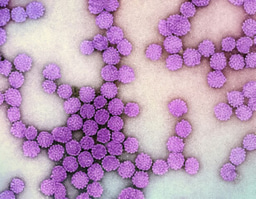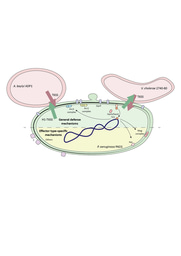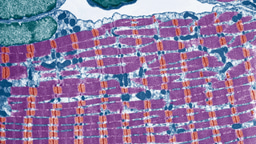Volatilizable Solid Additives in Non-fullerene Organic Solar Cells
Published in Electrical & Electronic Engineering
Organic solar cells (OSCs) with merits of large-scale manufacturing of light-weight flexible photovoltaic devices are regarded as potential low-cost devices for sustainable solar energy conversion. Various strategies have been applied to boost the photovoltaic performance of OSC devices, including material design, engineering of device interfaces, employing ternary or tandem device structures, etc. The morphology of donor-acceptor active layer is crucial for maximizing the photovoltaic performance for a given blend composition, which has been meticulously optimized through many processing techniques, such as using additives, choosing solvent as well as thermal or vapor annealing.
In the early days of my PhD, I focused on introducing some third components into the active layer of binary organic solar cells, which is one of the most effective ways to improve the photovoltaic performance of the devices. Initially, I was passionate about finding some third components to broaden the light harvesting in IT-M-based OSCs1, which achieved the highest PCE in non-fullerene OSCs once upon a time. In 2016, our research group designed and synthesized a low bandgap acceptor material, IEICO2, by employing alkoxy groups, which had a similar chemical structure and complementary absorption spectra with IT-M. Therefore, IEICO was used as a third component in the J52:IT-M-based active layer for broadening the light-harvesting and the ternary OSCs obtained a high PCE of 11.1% at that time3. After that, to explore other functions of third components, tetracyanoquinodimethane (TCNQ), which may work as molecular dopant to increase the photoconductivity of active layer, was introduced into the non-fullerene-based OSCs. Unexpectedly, under the low doping concentration as the literatures, TCNQ had no positive effect on the device performance. Then we attempted to add more than 10 wt.% of TCNQ into the active layers and the devices were treated with thermal annealing (TA) and dramatically, the photocurrent of the devices was improved resulting in higher efficiency. After investigating the morphology characteristics by X-ray diffraction, we found the π-π stacking of non-fullerene acceptors was enhanced after treated with TCNQ and we speculated that the improvement was related to the similar chemical structures between TCNQ and the end-groups of non-fullerene acceptor.
To validate my speculation, eight small molecules (SA-x, x=1 to 8) were designed and synthesized to have similar chemical structures with the end-groups of a non-fullerene acceptor, IT-4F4. As we expected, the intermolecular π–π interaction and charge transport properties of IT-4F can be significantly enhanced since the more condensed and ordered molecular arrangement after the SA-1 volatilized from the active layer. The devices fabricated by using SA-1 possessed better device stability and reproducibility than the devices using the most widely used solvent additive, DIO5.
In this work, we attempted to use TA to improve the device performance of SA-1-processed OSC devices, which was a very common and useful morphology optimization method, based on our systemic device optimizing works on non-fullerene-based OSCs. After carefully optimizing the annealing temperatures from 0 to 180℃, better device performances were obtained in the SA-1-processed OSCs treated with TA at 140 ℃ and we found that the as-cast devices with SA-1 (w/o TA) showed even worse photovoltaic performance than the devices without any additives. To explore the underlying reason behind this finding, we measured the absorption spectra of the solid films with SA-1 (with or w/o TA). We found that the absorption peak corresponding to SA-1 disappeared after treated with TA. Then we used various measurements, such as absorption spectra under different conditions, infra-red spectrum and atomic force microscope to clarify that all the SA-1 added into the active layer were totally removed from the blend film after treated with TA. After the additives left the active layer, no voids were observed in the films due to the molecular thermal vibration and the self-assembly of active layer materials in the high-temperature TA process. A big puzzle in this work was to prove the volatility of SA-1 and the different volatilization rate between powders and thin film of SA-1.. To prove the volatility of the SAs is highly dependent on the surface area of material, we addressed these issues by thermogravimeric analysis and recording videos of the volatile process of SAs and so on. We found that the powders and thin films (about 40 nm) showed very different volatilization rates.
Our results suggest that using volatilizable SAs is an alternative and potential method of making OSCs more competitive in future industrialization. For the further application of this kind of SAs, deeper studies of the working mechanism are badly needed, specifically by theoretical calculation or detailed morphology analysis. Moreover, the design rules for such volatilizable additives are deficient, which can be investigated in many aspects, such as the chemical structures or special functional group, molecular energy levels and so on. Besides, we can design other specific additives for different active materials, except for those based on acceptor-donor-acceptor-type non-fullerene acceptors, which will be a promising direction in the photovoltaic field.
1. Li, S.; Ye, L.; Zhao, W.; Zhang, S.; Mukherjee, S.; Ade, H.; Hou, J., Energy-Level Modulation of Small-Molecule Electron Acceptors to Achieve over 12% Efficiency in Polymer Solar Cells. Adv Mater 2016, 28, 9423-9429.
2. Yao, H.; Chen, Y.; Qin, Y.; Yu, R.; Cui, Y.; Yang, B.; Li, S.; Zhang, K.; Hou, J., Design and Synthesis of a Low Bandgap Small Molecule Acceptor for Efficient Polymer Solar Cells. Adv Mater 2016, 28, 8283-8287.
3. Yu, R.; Zhang, S.; Yao, H.; Guo, B.; Li, S.; Zhang, H.; Zhang, M.; Hou, J., Two Well-Miscible Acceptors Work as One for Efficient Fullerene-Free Organic Solar Cells. Adv Mater 2017, 29, 1700437.
4. Zhao, W.; Li, S.; Yao, H.; Zhang, S.; Zhang, Y.; Yang, B.; Hou, J., Molecular Optimization Enables over 13% Efficiency in Organic Solar Cells. J Am Chem Soc 2017, 139, 7148-7151.
5. Lee, J. K.; Ma, W. L.; Brabec, C. J.; Yuen, J.; Moon, J. S.; Kim, J. Y.; Lee, K.; Bazan, G. C.; Heeger, A. J., Processing Additives for Improved Efficiency from Bulk Heterojunction Solar Cells. J Am Chem Soc 2008, 130, 3619-3623.
Follow the Topic
-
Nature Communications

An open access, multidisciplinary journal dedicated to publishing high-quality research in all areas of the biological, health, physical, chemical and Earth sciences.
Related Collections
With Collections, you can get published faster and increase your visibility.
Women's Health
Publishing Model: Hybrid
Deadline: Ongoing
Advances in neurodegenerative diseases
Publishing Model: Hybrid
Deadline: Dec 24, 2025





Please sign in or register for FREE
If you are a registered user on Research Communities by Springer Nature, please sign in